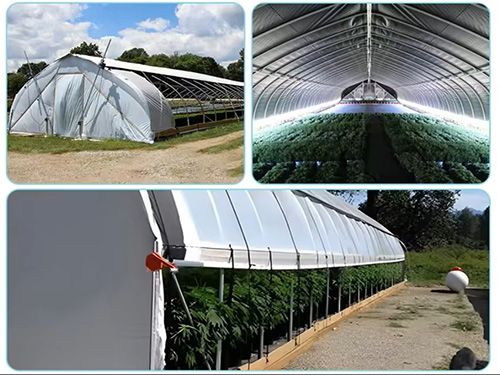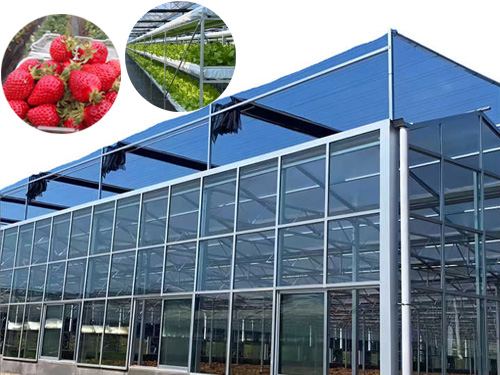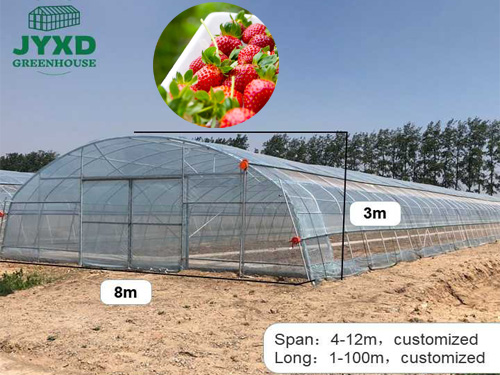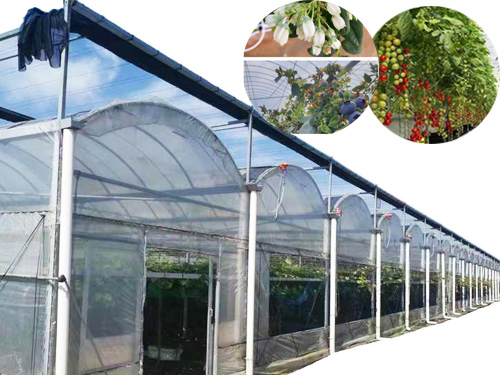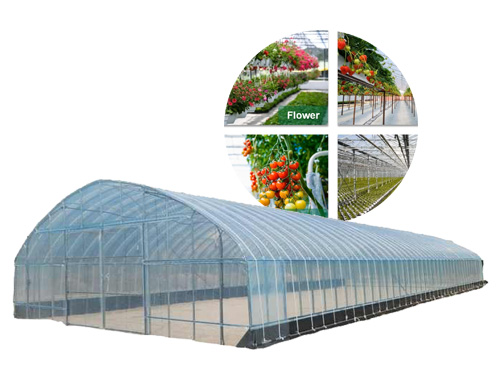NEWS DETAILS
NEWS INFORMATION
Space Optimization Tips for Small Greenhouses: Increase Planting Density and Efficiency
AUTHOR:jyxd-greenhouse DATE:2025-03-20 10:55:23 HITS:135
Small greenhouses offer the advantage of a controlled environment for plant growth, but they also come with the challenge of limited space. Maximizing space usage is key to increasing productivity and efficiency in smaller greenhouse setups. By implementing smart design strategies and using innovative techniques, you can boost your planting density without compromising plant health or growth. In this article, we will share effective space optimization tips for small greenhouses that will help you increase planting density, improve efficiency, and make the most of your available space.
1. Vertical Gardening: Utilize the Height of Your Greenhouse
One of the most effective ways to optimize space in a small greenhouse is by using vertical gardening techniques. Many plants, especially vining varieties, naturally grow upward, making them ideal candidates for vertical gardening systems. This approach allows you to use the height of your greenhouse rather than just the floor space. Consider the following vertical gardening solutions:
Vertical Planters and Shelves
Install tiered planters or shelves to grow plants in layers. This setup is especially useful for herbs, strawberries, and smaller vegetables. By using vertical surfaces, you can significantly increase planting density and maximize space.
Trellises and Support Systems
Use trellises, plant stakes, or cages to support climbing plants like tomatoes, cucumbers, beans, and peas. These plants can grow vertically, freeing up valuable floor space for other crops. Vertical growing not only optimizes space but also improves air circulation and light exposure for your plants.
Hanging Baskets
Hanging baskets are another space-saving option that allows you to grow plants like flowers, herbs, or strawberries while using the overhead space in your greenhouse. They help to make use of otherwise unused areas, providing more room on the ground for other plants.
2. Use of Modular and Stackable Containers
Modular and stackable containers are perfect for small greenhouses, as they allow you to increase planting density without overwhelming your space. These containers can be stacked vertically, offering the flexibility to create multiple levels of growing space. Additionally, they are portable, so you can rearrange them to suit your needs or adapt to seasonal changes.
Stackable containers are especially useful for growing plants that do not require deep soil, such as lettuce, herbs, and microgreens. By using modular containers, you can easily organize your greenhouse layout to fit more plants in a limited area.
3. Optimize Pathways and Layout
Efficient use of pathways and plant spacing within the greenhouse is essential for maximizing space. A well-organized layout allows you to make the most of every square foot of your greenhouse while maintaining accessibility and ease of maintenance.
Narrow Walkways
Consider designing narrow walkways that allow for better use of space without compromising mobility. In smaller greenhouses, wide aisles can waste valuable space. A narrow pathway, when planned properly, ensures that you can still navigate through the greenhouse without sacrificing growing space.
Efficient Plant Spacing
Ensure that plants are spaced adequately for their growth, but avoid excessive spacing. By carefully planning your plant layout, you can optimize density while still providing enough space for air circulation and light exposure. Use guidelines for specific plant species to determine the ideal planting distance and avoid overcrowding.
Zoning and Row Management
Organize your greenhouse into different zones based on plant types, light requirements, and growth stages. By grouping plants with similar needs together, you can manage their care more efficiently and reduce unnecessary space between incompatible crops. Arrange plants in rows or grids, ensuring easy access for maintenance tasks.
4. Companion Planting for Space Efficiency
Companion planting is the practice of growing complementary plants together to maximize space and improve plant health. Certain plants can benefit each other by providing shade, supporting growth, or deterring pests. By implementing companion planting strategies, you can increase the number of crops in your greenhouse without overcrowding.
For example, growing fast-growing crops like lettuce alongside slower-growing plants like tomatoes can help utilize the space more effectively. Additionally, pairing crops like basil and tomatoes can improve both yield and plant health while making the best use of available space.
5. Incorporate Hydroponic or Aquaponic Systems
Hydroponics and aquaponics are innovative soil-less growing systems that can save significant space in a small greenhouse. These systems allow plants to grow in nutrient-rich water, reducing the need for soil and traditional planting rows. Hydroponic systems use vertical racks, towers, or floating systems that can be stacked to optimize space further. Aquaponics combines fish farming with plant cultivation, where fish waste provides nutrients for plants, and the plants help filter and clean the water.
These systems offer a high-density growing environment, enabling you to grow a large number of plants in a small footprint. Additionally, hydroponics and aquaponics use less water and are often more efficient than traditional growing methods.
6. Implement Grow Lights for Enhanced Light Distribution
In smaller greenhouses, natural light may not always be sufficient to ensure healthy plant growth, especially during winter months or in areas with limited sunlight. Grow lights can be strategically placed throughout your greenhouse to supplement natural light and improve overall growth conditions.
Use energy-efficient LED grow lights to provide the necessary light for photosynthesis without consuming excessive electricity. These lights can be positioned to illuminate lower areas, ensuring that all plants, regardless of their height, receive optimal light exposure. By improving light distribution, you can ensure healthy plant growth in every corner of your greenhouse.
7. Climate Control Systems for Optimal Growth
Proper climate control is essential for maximizing efficiency in any greenhouse, but it is particularly important in smaller spaces where temperature and humidity levels can fluctuate quickly. Installing a climate control system that regulates temperature, humidity, and airflow can help create an optimal environment for plant growth.
Use thermostats and humidity controllers to maintain consistent conditions. For example, during hot months, a well-ventilated greenhouse with automated fans will keep temperatures and humidity in check, preventing fungal diseases and other issues caused by excess moisture.
8. Seasonal Adjustments for Space Optimization
As seasons change, so do the growing needs of your plants. Adjust your greenhouse layout accordingly to accommodate different types of crops that thrive in various seasons. For instance, in winter, you may want to prioritize cold-hardy crops like kale and spinach, while in summer, you may opt for heat-tolerant plants like peppers and tomatoes.
Incorporate movable shelving or adjustable vertical planters that can be rearranged based on seasonal crop rotation. By optimizing space for each growing season, you can ensure maximum productivity throughout the year.
9. Conclusion
Optimizing space in small greenhouses is a critical strategy for increasing planting density, efficiency, and overall productivity. By implementing vertical gardening, modular containers, strategic layout planning, companion planting, and advanced systems like hydroponics, you can maximize every square foot of space available. Proper climate control, supplemental lighting, and seasonal adjustments further enhance your greenhouse’s potential for year-round growth.
These space optimization tips not only improve the efficiency of your small greenhouse but also contribute to a healthier, more sustainable growing environment. Whether you are a hobbyist or a commercial grower, adopting these practices will allow you to grow more with less space, ensuring a successful and productive greenhouse operation. For expert advice or to explore greenhouse solutions tailored to your needs, contact us today.
Hebei Juyou Xinda Greenhouse Facilities Co.,Ltd.
Copyright © 2024-2025 https://www.jyxd-greenhouse.com. All Rights Reserved Hebei Juyou Xinda Greenhouse Facilities Co.,Ltd.Copyright





 Current Location:
Current Location:


